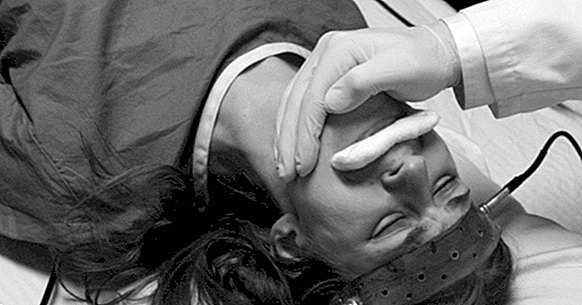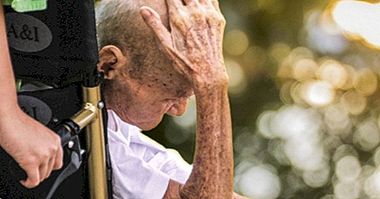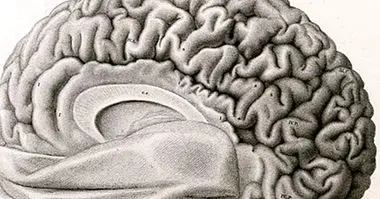Electroshock: applications of electroconvulsive therapy
With the popularization of the use of electricity in the nineteenth century appeared a large number of applications of this phenomenon. One of them was the treatment of physical and mental diseases through electroshock; however, electroconvulsive therapy as such did not emerge until the first half of the last century.
Despite his bad reputation, electroconvulsive or electroshock therapy has several applications that have been validated by scientific research. Although today still carries some side effects and risks, these are much less serious than is often believed.
- Maybe you're interested: "What is a lobotomy and with what purpose was it practiced?"
What is electroconvulsive therapy?
Electroshock therapy consists of apply low intensity electric currents in the brain with the aim of causing a mild seizure. This in turn produces chemical changes in the central nervous system, which can alleviate the symptoms of certain psychological disorders.
It is not known exactly what the mechanism of action of electroconvulsive therapy is, although it is believed that in the short term it has an anticonvulsant effect in the frontal lobes and in the long term favors blood flow and metabolism in the temporal lobes . It also seems to increase the volume of the hippocampus.
This type of intervention is carried out under the effects of anesthesia and muscle sedatives; In addition, mouth guards are often used to prevent damage to the tongue and teeth. Small electrodes are placed on one side of the head or both; through them the downloads will be received.
Seizures induced by electroshock equipment usually last less than one minute. Although the person remains unconscious and physically relaxed, Electroencephalographic activity is triggered during this time; later the brain recovers its normal function.
Interventions by electroconvulsive therapy consist of several sessions, usually between 6 and 12 , which are spread over a period of 3 or 4 weeks, so that it is allowed to pass at least a couple of days between each application of the electroshock. The treatment is adapted according to the specific disorder and the severity of the symptoms.
Applications of this treatment
Electroconvulsive therapy is normally used in patients with severe symptoms that do not respond to other treatments , although it does not work in all cases. For the time being, research has confirmed the effectiveness of electroshock in the following disorders.
1. Major depression
In the case of depression, electroshock is used especially when there is psychotic symptoms or imminent suicide risk , especially if other treatments have been applied and no results have been obtained.
It is considered that this therapy is useful in the management of psychogenic depression, but also of the one that appears as a consequence of biological alterations, such as Parkinson's disease, Huntington's chorea or multiple sclerosis.
Electroconvulsive therapy has a success rate of 50% in these types of cases. Depressive episodes in the context of bipolar disorder show a response similar to electroshock.
- Related article: "Are there several types of depression?"
2. Bipolar disorder
Electroshock is a second-line treatment for bipolar disorder, both in the case of depressive episodes and in those of mania, which are characterized by a prolonged state of excessive euphoria and activation. It is particularly applicable in bipolar patients who present long-term manic episodes .
- Related article: "Bipolar disorder: 10 features and curiosities you did not know"
3. Catatonia
Catatonia is a state of immobility or motor disorganization that occurs with a decrease in reactivity to environmental stimuli. It occurs normally in the context of schizophrenia , although it can also occur in depression, post-traumatic stress disorder or because of physical affectations, such as substance overdose.
When catatonia is severe and puts the person's life at risk, mainly due to starvation, electroconvulsive therapy is considered the treatment of choice. However, it seems that these effects have a short duration , so it is necessary to combine electroshock with other long-term treatments.
4. Schizophrenia
Sometimes electroconvulsive therapy is applied in schizophrenic patients who do not respond to drug treatment antipsychotics. As we have seen, it is especially effective in cases of catatonic schizophrenia, one of the most common subtypes of this disorder.
Side effects and risks of electroshock
In the beginning the electroshock was applied without anesthesia and electric shocks used to be unnecessarily intense . This made primitive treatments cause very serious side effects, among which the most common and striking were memory loss and fracture of teeth and vertebrae.
Today the electroshock is considered a safe treatment . It is true that sometimes there is confusion and retrograde amnesia just after the application of discharges, but the orientation is recovered after a few days, at most, and the memory loss is rarely maintained after one or two months of the end of treatment .
During the weeks of treatment it is common for headaches to appear , muscles and jaws, as well as nausea. These symptoms subside with the use of ordinary medications. In general, the risks and side effects of electroshock are not greater than those of any other procedure involving the use of anesthesia.
One of the most striking aspects of electroconvulsive therapy is that Contraindications have not been described ; for example, it is the treatment of choice to treat severe depression and resistant to psychotherapy in pregnant women, since it does not entail any risk to the fetus, unlike most medications.



















